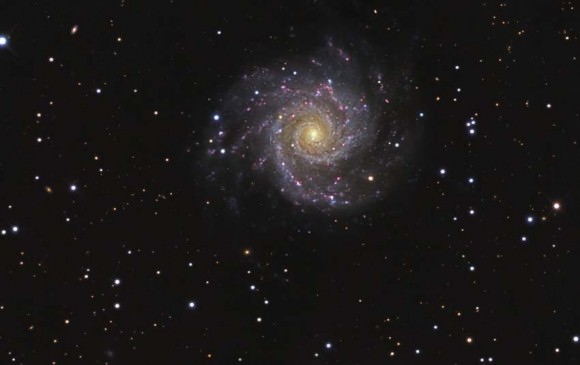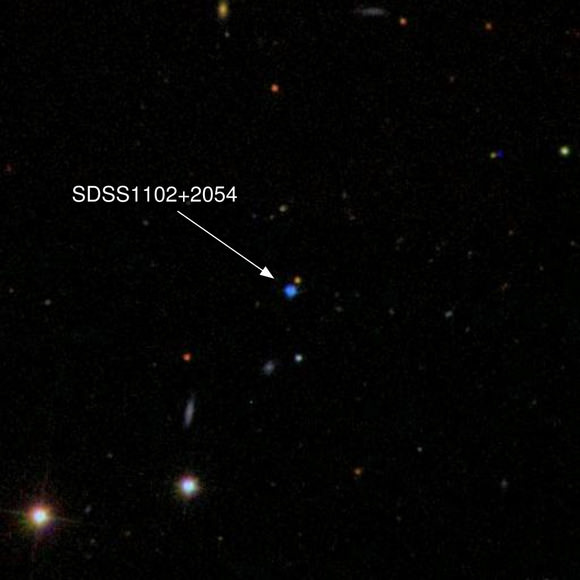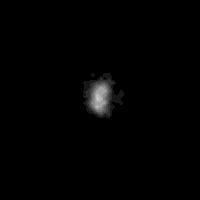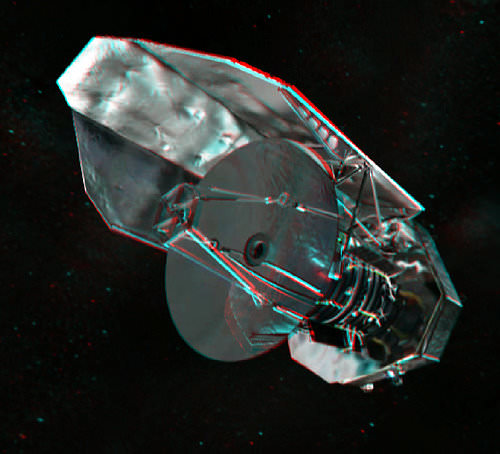Greetings, fellow SkyWatchers! It’s a dark sky weekend and for many of us, the weather scene is improving greatly. Are you ready to enjoy some astronomy? Then take the chance to get out in the early morning and admire the alluring dance of the “Old Moon in the New Moon’s Arms” as it silently changes planetary partners over the next few days and catch some bright and early Leonid meteors. You won’t need gigantic optics to enjoy this weekend’s studies as we have a look at some very impressive double stars, galaxies and open clusters. Dust off those optics! And meet me in the backyard….
Friday, November 13, 2009 – Start your day the astronomy way! Get up early and take a look at the pleasing pairing of Saturn and the Moon. On this date in 1990, Carolyn Porco was appointed leader of the imaging team for the Cassini mission to Saturn. Porco’s career as a planetary scientist is unsurpassed, and she is an expert on planetary ring systems. For all of you who look at Saturn’s rings with wonder, be sure to send your best to Porco; her undying love of astronomy began with observations just like yours!
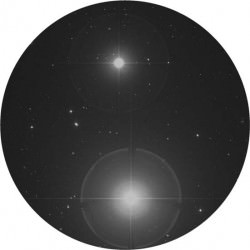 Today is also the birthdate of James Clerk Maxwell. Born in 1831, Maxwell was a leading English theoretician on electromagnetism and the nature of light. Tonight let’s take a journey of 150 light-years as we honor Maxwell’s theories of electricity and magnetism and take a look at a star that is in nuclear decay—Alpha Ceti (RA 03 02 19 Dec +04 14 10). Its name is Menkar, and this 2nd magnitude orange giant is slowly using up its nuclear fuel and gaining mass. According to Maxwell’s theories of the electromagnetic and weak nuclear forces, W bosons must be produced in such circumstances, an extremely advanced line of thinking for the time. Without getting deep into the physics, simply enjoy reddish Alpha for the beauty that it is. Even small telescopes will reveal its 5th magnitude optical partner 93 Ceti to the north. It’s only another 350 light-years further away! You’ll be glad you took the time to look this one up, because the wide separation and color contrast of the pair make this tribute to Maxwell well worth your time!
Today is also the birthdate of James Clerk Maxwell. Born in 1831, Maxwell was a leading English theoretician on electromagnetism and the nature of light. Tonight let’s take a journey of 150 light-years as we honor Maxwell’s theories of electricity and magnetism and take a look at a star that is in nuclear decay—Alpha Ceti (RA 03 02 19 Dec +04 14 10). Its name is Menkar, and this 2nd magnitude orange giant is slowly using up its nuclear fuel and gaining mass. According to Maxwell’s theories of the electromagnetic and weak nuclear forces, W bosons must be produced in such circumstances, an extremely advanced line of thinking for the time. Without getting deep into the physics, simply enjoy reddish Alpha for the beauty that it is. Even small telescopes will reveal its 5th magnitude optical partner 93 Ceti to the north. It’s only another 350 light-years further away! You’ll be glad you took the time to look this one up, because the wide separation and color contrast of the pair make this tribute to Maxwell well worth your time!
Saturday, November 14, 2009 – This morning before dawn, look for the Moon as it nears beautiful, blue-white Spica. This date in history marks the discovery of what we now refer to as a ‘‘Trans-Neptunian Object’’—Sedna. In 2003 Brown, Trujillo, and Rabinowitz went into the history books for having observed the most distant natural Solar System body to date. The rethinking of what it means to be a planet that this discovery inspired would eventually spell the end to Pluto’s reign as our ninth planet! Also on this date in 1971, Mariner 9 became the first space probe to orbit Mars. Can you still spot the faint westering Mars at sunrise?
Tonight let’s have a look at one of the most elusive Messiers’ of all, as we head about two fingerwidths northeast of Eta Piscium in search of M74 (RA 01 36 42 Dec +15 47 00).
Discovered at the end of September in 1780 by Mechain, M74 is a real challenge to smaller backyard telescopes, even at magnitude 9. This near perfect presentation of a face-on spiral galaxy has low surface brightness, and it takes really optimal conditions to spot much more than its central region. Located 30–40 million light-years away, M74 is roughly the size of the Milky Way yet contains no central bar. Its tightly wound spiral arms contain clusters of young blue stars and traces of nebulous star-forming regions that can be seen in photos. Yet little more than vague concentrations in structure are all that can be seen, even in a large scope. But if the sky conditions are great, even a small telescope can see details! Add the slightest bit of light pollution and even the biggest scopes will have problems locating it. Don’t be disappointed if all you see is a bright nucleus surrounded by a small hazy glow. Just try again another time. Who knows what might happen? A supernova was discovered in 2002 by a returning amateur, and again in 2003 from the Southern Hemisphere. When it comes to M74, this is the very best time of year to try with a smaller scope!
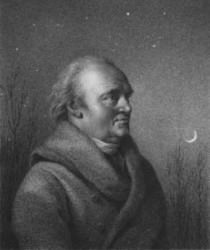 Sunday, November 15, 2009 – Up early? Then check out the Moon as it slides its way along the ecliptic toward the Sun and passes Venus! It’s celebrating this day, for in 1738 on this date William Herschel was born. Among this British astronomer’s and musician’s many accomplishments, Herschel was credited with the discovery of the planet Uranus in 1781; detecting the motion of the Sun in the Milky Way in 1785; finding Castor’s binary companion in 1804; and he was the first to record infrared radiation. Herschel was well known as the discoverer of many clusters, nebulae, and galaxies. This came through his countless nights studying the sky and creating catalogs whose information we still use today. Just look at how many we’ve logged this year! For the next few days, let’s look toward Cassiopeia as we remember this great astronomer. . .
Sunday, November 15, 2009 – Up early? Then check out the Moon as it slides its way along the ecliptic toward the Sun and passes Venus! It’s celebrating this day, for in 1738 on this date William Herschel was born. Among this British astronomer’s and musician’s many accomplishments, Herschel was credited with the discovery of the planet Uranus in 1781; detecting the motion of the Sun in the Milky Way in 1785; finding Castor’s binary companion in 1804; and he was the first to record infrared radiation. Herschel was well known as the discoverer of many clusters, nebulae, and galaxies. This came through his countless nights studying the sky and creating catalogs whose information we still use today. Just look at how many we’ve logged this year! For the next few days, let’s look toward Cassiopeia as we remember this great astronomer. . .
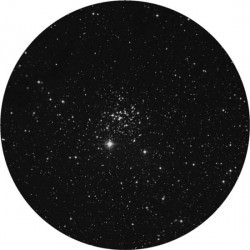 Herschel discovered many of the famous ‘‘400’’ objects in Cassiopeia just 2 days after his birthday in 1787. Begin by familiarizing yourself with the area between Delta and Epsilon Cassiopeia as we have a look at NGC 654. At magnitude 6.5, NGC 654 (RA 01 44 00 Dec +61 53 00) is achievable with binoculars but shows as nothing more than a hazy spot bordered by the resolvable star HD 10494. Yet, set a telescope its way and watch this diminutive beauty resolve. It is a very young open cluster, which has been extensively studied spectroscopically. Oddly enough, it did not cease the production of low-mass stars after the heavier ones formed and shows distinct polarization. Enclosed in a shell of interstellar matter, almost all of NGC 654’s stars have reached main sequence, and two have been identified as detached binaries.
Herschel discovered many of the famous ‘‘400’’ objects in Cassiopeia just 2 days after his birthday in 1787. Begin by familiarizing yourself with the area between Delta and Epsilon Cassiopeia as we have a look at NGC 654. At magnitude 6.5, NGC 654 (RA 01 44 00 Dec +61 53 00) is achievable with binoculars but shows as nothing more than a hazy spot bordered by the resolvable star HD 10494. Yet, set a telescope its way and watch this diminutive beauty resolve. It is a very young open cluster, which has been extensively studied spectroscopically. Oddly enough, it did not cease the production of low-mass stars after the heavier ones formed and shows distinct polarization. Enclosed in a shell of interstellar matter, almost all of NGC 654’s stars have reached main sequence, and two have been identified as detached binaries.
Until next week, keep your eyes open as early Leonid meteors are beginning to streak across the morning skies! Wishing you clear and steady…
This week’s awesome images are (in order of appearance); Carolyn Porco (credit—NASA), Alpha Ceti (credit—Palomar Observatory, courtesy of Caltech), M74 (credit—R. Jay GaBany), Sir William Herschel (widely used public image) and NGC 654 (credit—Palomar Observatory, courtesy of Caltech). We thank you so much!


